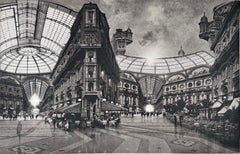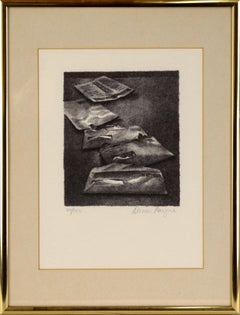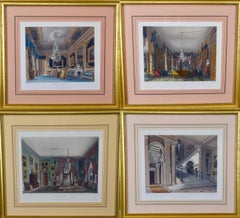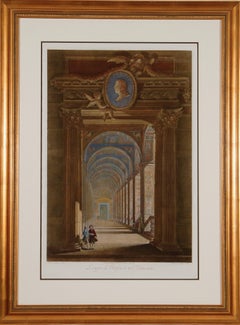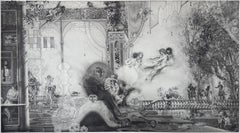Engraving Interior Prints
Early 2000s Contemporary Engraving Interior Prints
Engraving, Etching
1990s Photorealist Engraving Interior Prints
Archival Paper, Drypoint, Etching
Early 19th Century Old Masters Engraving Interior Prints
Engraving
1810s Academic Engraving Interior Prints
Engraving
Late 18th Century Old Masters Engraving Interior Prints
Engraving
1970s Contemporary Engraving Interior Prints
Engraving, Etching
Early 1900s Post-Impressionist Engraving Interior Prints
Drypoint, Etching
Late 17th Century Engraving Interior Prints
Mezzotint
1920s Art Deco Engraving Interior Prints
Engraving, Aquatint
21st Century and Contemporary American Modern Engraving Interior Prints
Mezzotint
1780s Other Art Style Engraving Interior Prints
Engraving
Early 1600s Old Masters Engraving Interior Prints
Engraving
Early 19th Century English School Engraving Interior Prints
Handmade Paper, Engraving, Watercolor
Mid-18th Century Engraving Interior Prints
Engraving
1950s American Modern Engraving Interior Prints
Etching, Drypoint
1780s Engraving Interior Prints
Ink, Paper, Engraving
Late 18th Century Old Masters Engraving Interior Prints
Mezzotint
1990s Contemporary Engraving Interior Prints
Paper, Engraving
Early 19th Century Engraving Interior Prints
Engraving
Mid-17th Century Baroque Engraving Interior Prints
Engraving, Etching
Late 18th Century Engraving Interior Prints
Engraving, Etching
1910s Modern Engraving Interior Prints
Drypoint, Etching
1990s Contemporary Engraving Interior Prints
Etching, Engraving
Late 18th Century Engraving Interior Prints
Engraving
Mid-19th Century Realist Engraving Interior Prints
Engraving
1880s French School Engraving Interior Prints
Mezzotint
Early 1900s Art Nouveau Engraving Interior Prints
Drypoint
Early 2000s Contemporary Engraving Interior Prints
Paper, Drypoint
1990s Contemporary Engraving Interior Prints
Mezzotint
Early 20th Century American Modern Engraving Interior Prints
Drypoint
1990s Contemporary Engraving Interior Prints
Etching, Engraving
1980s American Modern Engraving Interior Prints
Engraving, Etching
1990s American Modern Engraving Interior Prints
Charcoal, ABS, Engraving, Etching
Late 18th Century French School Engraving Interior Prints
Engraving
1880s French School Engraving Interior Prints
Drypoint, Etching, Aquatint, Laid Paper
1880s French School Engraving Interior Prints
Etching, Drypoint, Aquatint
Late 18th Century French School Engraving Interior Prints
Engraving
Mid-18th Century Old Masters Engraving Interior Prints
Laid Paper, Engraving, Woodcut
Late 20th Century Modern Engraving Interior Prints
Laid Paper, Drypoint, Etching
Late 18th Century English School Engraving Interior Prints
Watercolor, Handmade Paper, Engraving
1770s Renaissance Engraving Interior Prints
Engraving, Watercolor
1630s Old Masters Engraving Interior Prints
Engraving
Early 20th Century Modern Engraving Interior Prints
Drypoint, Etching
Late 18th Century English School Engraving Interior Prints
Watercolor, Handmade Paper, Engraving
Early 19th Century Engraving Interior Prints
Watercolor, Engraving, Etching
Late 18th Century French School Engraving Interior Prints
Engraving
1780s Engraving Interior Prints
Engraving
1780s Realist Engraving Interior Prints
Engraving
Early 20th Century Modern Engraving Interior Prints
Engraving
Mid-19th Century Naturalistic Engraving Interior Prints
Engraving
Mid-18th Century Old Masters Engraving Interior Prints
Engraving, Etching
1920s American Realist Engraving Interior Prints
Drypoint
Late 18th Century French School Engraving Interior Prints
Engraving
Late 19th Century Impressionist Engraving Interior Prints
Drypoint
Early 20th Century Dutch School Engraving Interior Prints
Mezzotint
21st Century and Contemporary Contemporary Engraving Interior Prints
Mezzotint
1880s French School Engraving Interior Prints
Laid Paper, Drypoint, Etching, Aquatint
Late 19th Century Engraving Interior Prints
Engraving
Late 18th Century French School Engraving Interior Prints
Engraving
Late 18th Century French School Engraving Interior Prints
Engraving
